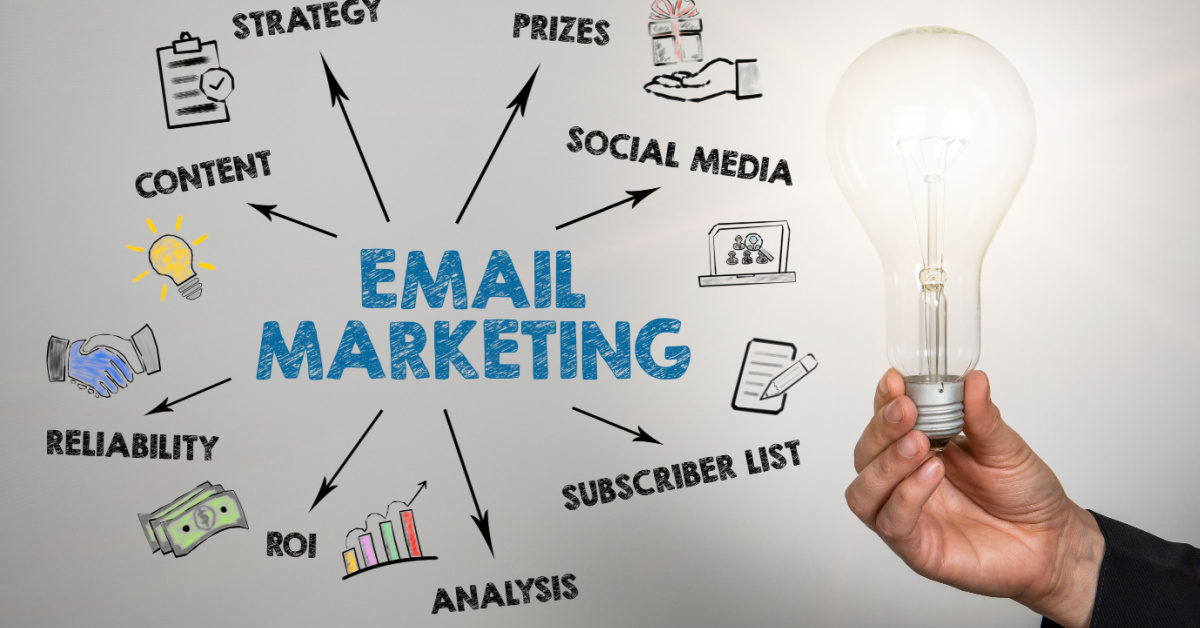Content Marketing vs Performance Marketing: Finding the Right Balance in 2025
The marketing landscape in 2025 continues to be shaped by two seemingly opposite forces: the long-term, relationship-building focus of content marketing and the immediate, results-driven approach of performance marketing. While these disciplines have historically operated in separate silos with different teams, metrics, and strategies, forward-thinking organizations are discovering that the most effective marketing happens at the intersection of these approaches.
This comprehensive guide explores the strategic differences between content and performance marketing, analyzes their complementary strengths, and provides a framework for developing an integrated approach that delivers both immediate results and sustainable growth.
Understanding the Core Differences
Before exploring integration strategies, it’s essential to understand the fundamental differences between these marketing disciplines:
Content Marketing Defined
Content marketing focuses on creating and distributing valuable, relevant content to attract, engage, and retain a clearly defined audience with the ultimate goal of driving profitable customer action through relationship building and thought leadership.
Key Characteristics:
- Timeline: Long-term investment (6-18+ month horizon)
- Primary Metrics: Engagement, audience growth, brand authority
- Strategic Focus: Building audience relationships and trust
- Attribution Challenge: Difficult to directly attribute to sales
- Risk Profile: Lower short-term risk, higher strategic risk
Performance Marketing Defined
Performance marketing encompasses digital marketing campaigns where advertisers pay only when specific actions occur (clicks, conversions, sales). It focuses on immediate, measurable results and continuous optimization toward specific KPIs.
Key Characteristics:
- Timeline: Immediate to short-term results (0-3 month horizon)
- Primary Metrics: ROAS, CPA, conversion rates, CAC
- Strategic Focus: Driving specific, measurable actions
- Attribution Focus: Direct response measurement
- Risk Profile: Higher short-term risk, lower strategic risk
The Current Marketing Landscape
The relationship between content and performance marketing has evolved significantly in recent years:
Historical Separation (2010-2020)
- Content marketing operated independently from direct response teams
- Separate budgets, leadership, and success metrics
- Content focused primarily on top-of-funnel awareness
- Performance focused exclusively on bottom-funnel conversion
Early Integration Attempts (2020-2023)
- Content marketing began incorporating conversion elements
- Performance marketing started considering user experience
- Initial content distribution through paid channels
- Preliminary shared attribution models
Current Integration Era (2024-2025)
- Strategic alignment of content and performance objectives
- Content designed with performance distribution in mind
- Performance campaigns leveraging content assets
- Integrated measurement frameworks across disciplines
The Case for Integration: Data-Backed Benefits
Recent research demonstrates compelling benefits from integrating content and performance approaches:
Performance Enhancement
Organizations that strategically align content and performance marketing report significant improvements in key metrics:
| Performance Indicator | Improvement with Integration |
|---|---|
| Paid Media ROAS | +37% average improvement |
| Customer Acquisition Cost | 24% average reduction |
| Conversion Rate | +41% compared to standalone campaigns |
| Customer Lifetime Value | +57% for integrated acquisition |
Case Study: E-commerce retailer Meridian Outdoor implemented an integrated approach where educational content about sustainable materials was incorporated into their performance campaigns. This approach reduced their customer acquisition costs by 31% while increasing average order values by 24% compared to their previous product-focused ads.
Content Amplification
Content marketing supported by performance strategies shows dramatically improved reach and impact:
| Content Performance Indicator | Improvement with Integration |
|---|---|
| Content Reach | 3.7x greater audience exposure |
| Engagement Rates | +68% compared to organic-only distribution |
| Content ROI | 2.4x higher return on content investment |
| Authority Building | 43% faster topic authority establishment |
Case Study: B2B software provider CloudAxis strategically amplified their industry research reports through targeted LinkedIn campaigns, resulting in a 287% increase in qualified leads compared to organic distribution while reducing their sales cycle by 23% for influenced prospects.
Strategic Integration Framework
The most successful organizations follow a systematic approach to integrating content and performance strategies:
1. Unified Customer Journey Mapping
Begin by mapping a comprehensive customer journey that incorporates both content touchpoints and performance marketing interactions:
Implementation Steps:
- Create journey maps segmented by persona and buying stage
- Identify critical information needs at each journey stage
- Map existing content assets to journey points
- Identify performance marketing insertion points
- Document transition moments between content and conversion
Key Integration Tactic: Develop “content-to-conversion bridges” that seamlessly transition audiences from educational content consumption to action-taking moments.
Implementation Example: A financial services firm mapped their customer journey for retirement planning services, identifying key decision points where educational content naturally transitions to service consideration. They created specific “next step” content pieces designed to bridge between educational retirement calculators and consultation requests.
2. Performance-Informed Content Strategy
Develop content strategies that incorporate performance data and conversion goals from inception:
Implementation Steps:
- Analyze top-performing ad copy and offers for content themes
- Identify high-converting keywords for content development
- Study competitor performance campaigns for content gaps
- Develop content specifically designed for performance distribution
- Create modular content that supports multiple campaign objectives
Key Integration Tactic: Implement “content performance sprints” where marketing teams analyze conversion data to identify and develop high-potential content topics.
Implementation Example: A health technology company noticed their performance campaigns around “sleep tracking” significantly outperformed other wellness topics. They shifted their content calendar to create an in-depth sleep optimization series, which generated 3.5x more qualified leads than their general wellness content.
3. Content-Enhanced Performance Campaigns
Elevate performance marketing campaigns by incorporating high-value content elements:
Implementation Steps:
- Develop ad creative that offers genuine informational value
- Create content-rich landing pages rather than pure conversion pages
- Test educational vs. promotional messaging in ad copy
- Use content snippets as native advertising units
- Develop micro-content experiences within ad environments
Key Integration Tactic: Design “value-first landing experiences” that provide immediate value before requesting conversion actions.
Implementation Example: An enterprise software company replaced their standard demo request landing pages with interactive assessment tools that provided immediate value while qualifying prospects, increasing conversion rates by 47% while improving lead quality scores.
4. Strategic Distribution Matrix
Develop a comprehensive distribution strategy that leverages both organic and paid channels:
Implementation Steps:
- Map content assets across paid and organic channels
- Develop channel-specific content adaptations
- Create amplification schedules for high-value content
- Implement sequential retargeting based on content consumption
- Establish cross-channel attribution protocols
Implementation Framework:
| Content Type | Organic Distribution | Paid Amplification | Performance Integration |
|---|---|---|---|
| Thought Leadership | Social, Email, Partners | Executive Targeting, Professional Networks | Retargeting for related content |
| Educational Guides | SEO, Resource Center | Problem-Aware Audience Targeting | Conversion sequence for solutions |
| Case Studies | Email, Sales Enablement | Look-alike Customer Targeting | Direct conversion campaigns |
| Comparison Content | SEO, Partner Distribution | Competitor Term Targeting | High-intent conversion focus |
| Interactive Tools | Organic Social, Community | Tool-Seeking Audience Targeting | Lead generation with value exchange |
Key Integration Tactic: Implement “content amplification triggers” that automatically allocate performance marketing budget to content pieces showing strong organic engagement signals.
Implementation Example: A SaaS company created an automated system that monitors content performance across organic channels and automatically creates amplification campaigns for pieces that exceed engagement thresholds, resulting in 63% higher ROI on their content investments.
5. Integrated Measurement Framework
Develop unified measurement systems that capture both content impact and performance outcomes:
Implementation Steps:
- Define shared KPIs across content and performance teams
- Implement multi-touch attribution modeling
- Create content influence measurement protocols
- Develop performance campaign quality scores
- Establish lifetime value tracking by acquisition pathway
Key Integration Tactic: Create “contribution margin reporting” that shows how content marketing influences CAC, conversion rates, and customer value across performance campaigns.
Implementation Example: An online education provider implemented multi-touch attribution that specifically tracked how content interactions influenced enrollment decisions, discovering that prospects who engaged with at least three content pieces before seeing conversion-focused ads had a 72% higher completion rate for enrollments.
Implementation: Team Structures and Workflows
Successfully integrating content and performance marketing requires organizational adjustments:
1. From Siloed to Integrated Teams
Traditional structures that separate content creation from performance marketing lead to misalignment and missed opportunities:
Evolution of Team Structures:
| Traditional Structure | Transitional Structure | Integrated Structure |
|---|---|---|
| Separate content, social, and performance teams | Shared goals with separate execution teams | Unified customer acquisition teams |
| Different reporting structures | Matrix management across disciplines | Integrated leadership |
| Separate planning processes | Coordinated planning cycles | Single strategic planning process |
| Minimal knowledge sharing | Regular cross-team collaboration | Blended skill development |
| Competition for resources | Negotiated resource allocation | Strategic resource allocation |
Key Integration Tactic: Implement “sprint teams” organized around customer segments or journey stages rather than marketing disciplines.
Implementation Example: A retail brand reorganized their marketing department from channel-based teams (content, social, paid media) to customer journey teams (acquisition, engagement, retention), with each team containing both content and performance specialists, resulting in 28% improved efficiency and 34% better campaign results.
2. Integrated Workflows and Processes
Beyond team structures, integrated workflows ensure content and performance strategies remain aligned:
Core Workflow Components:
- Joint campaign planning sessions
- Shared content calendars with performance overlays
- Combined content performance reviews
- Cross-functional creative briefing templates
- Unified marketing technology stack
Key Integration Tactic: Create “content performance cycles” with regular reviews and optimization points between content and performance specialists.
Implementation Example: A travel company implemented biweekly “content performance huddles” where content creators and paid media specialists jointly reviewed campaign data and made coordinated adjustments, improving campaign effectiveness by 43% over their previous siloed approach.
Technology Enablers for Integration
Modern marketing technology stacks are increasingly designed to support integrated approaches:
1. Unified Customer Data Platforms
These systems create single customer views that support both content personalization and performance targeting:
Key Capabilities:
- Cross-channel identity resolution
- Unified engagement history
- Real-time audience segmentation
- Predictive next-best-content recommendations
- Integrated campaign activation
Implementation Impact: Organizations implementing unified CDPs report 47% higher marketing ROI through improved targeting precision and content relevance.
2. Content Intelligence Platforms
Advanced systems that optimize content based on performance data:
Key Capabilities:
- Performance prediction for content
- Automated A/B testing of content elements
- Content recommendation engines
- Engagement pattern analysis
- Content attribution modeling
Implementation Impact: Companies leveraging content intelligence technologies see 52% higher engagement rates and 38% improved conversion from content.
3. Integrated Campaign Platforms
Modern campaign tools designed for coordinated content and performance execution:
Key Capabilities:
- Unified campaign planning interfaces
- Cross-channel asset management
- Automated content distribution
- Performance-based content promotion
- Integrated analytics dashboards
Implementation Impact: Organizations using integrated campaign platforms report 41% higher team efficiency and 36% faster time-to-market for new initiatives.
Common Integration Challenges and Solutions
Despite the clear benefits, many organizations encounter obstacles when attempting to integrate content and performance approaches:
1. Measurement Misalignment
Challenge: Content typically uses engagement metrics while performance focuses on conversion metrics, creating comparison difficulties.
Solution Framework:
- Implement unified customer journey analytics
- Develop shared increment metrics across disciplines
- Create weighted scoring systems for different interaction types
- Establish clear content influence attribution protocols
- Set appropriate timeframe expectations for different metrics
Implementation Example: A B2B technology company developed a “marketing value unit” (MVU) system that assigned weighted values to different marketing interactions from awareness to purchase, allowing them to evaluate both content and performance initiatives on a common scale.
2. Timeline Tensions
Challenge: Content marketing typically shows results over months/years, while performance marketing operates on days/weeks timeframes.
Solution Framework:
- Create nested planning cycles (quarterly strategy, monthly execution)
- Implement rolling content development schedules
- Develop quick-turn content formats for performance needs
- Establish content foundations before performance scaling
- Create balanced scorecard with short and long-term metrics
Implementation Example: An insurance company implemented a “70/20/10” resource allocation model—70% to proven performance channels, 20% to content-performance integration experiments, and 10% to long-term content investments—allowing them to balance immediate needs with strategic building.
3. Skill and Culture Gaps
Challenge: Content teams and performance teams often have different skills, priorities, and working styles that create friction.
Solution Framework:
- Implement cross-training programs between disciplines
- Create shared objectives and incentive structures
- Establish common terminology and metrics dictionaries
- Develop collaborative planning workflows
- Build integrated project management systems
Implementation Example: A retail brand implemented monthly “skill exchange workshops” where content and performance team members taught each other core concepts from their disciplines, leading to 37% improved collaboration scores and more effective integrated campaigns.
Building Your Integrated Strategy: A 90-Day Roadmap
For organizations looking to integrate content and performance marketing, this 90-day implementation roadmap provides a structured approach:
Days 1-30: Assessment and Alignment
- Week 1: Audit current content and performance marketing activities
- Week 2: Map customer journeys across content and conversion touchpoints
- Week 3: Analyze performance data to identify content opportunities
- Week 4: Develop integrated KPIs and measurement framework
Key Deliverable: Integrated Marketing Strategy Document with shared objectives, KPIs, and coordination plan.
Days 31-60: Pilot Implementation
- Week 5: Select 1-2 high-potential customer segments for integration pilot
- Week 6: Develop content specifically designed for performance distribution
- Week 7: Create content-enhanced landing experiences for key campaigns
- Week 8: Implement cross-channel tracking for pilot initiatives
Key Deliverable: Pilot Campaign Launch with integrated content-performance approach.
Days 61-90: Optimization and Scaling
- Week 9: Analyze pilot results and document learnings
- Week 10: Refine integration approach based on data
- Week 11: Develop training and workflow adjustments for broader implementation
- Week 12: Create scaling plan for organization-wide integration
Key Deliverable: Integration Scaling Plan with resource requirements, timeline, and expected outcomes.
Conclusion: The Future of Marketing Integration
As we move through 2025, the artificial divide between content and performance marketing continues to dissolve. The most successful marketing organizations no longer view these as separate disciplines but as complementary approaches within an integrated marketing ecosystem.
The future belongs to brands that can deliver immediate performance results while building lasting audience relationships through valuable content. By implementing the frameworks outlined in this guide, organizations can create marketing approaches that drive measurable business results today while building the brand equity and audience relationships that ensure sustainable success tomorrow.
The question is no longer “content marketing or performance marketing?”—it’s “how can we create an integrated approach that maximizes the strengths of both?”
What strategies have you used to balance content and performance marketing in your organization? Share your experiences in the comments below.




